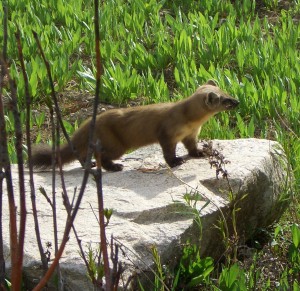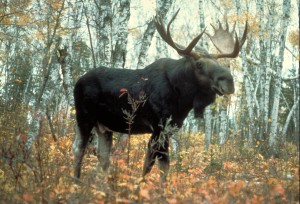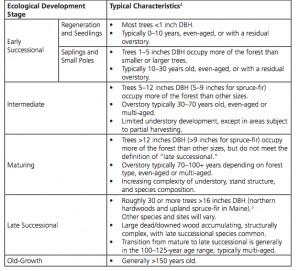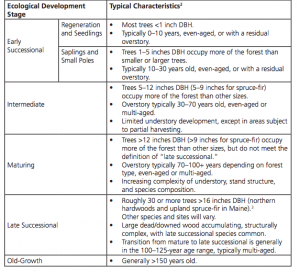Managing for Habitat Diversity at the Ownership and Landscape Scales In Maine
By Robert Bryan
From the publication Forest Wisedom
Ethical Forestry is about not just seeing the trees in the forest, but for managing for a wide array of values, not just timber. Wildlife habitat is one of these values. Many landowners today are not that interested in the timber value of their woodlots, what they want to see is more animals. This represents a challenge, as most holdings today are too small to provide for all the habitat needs of a medium to large mammal.
While a small woodlot may not be able to support a lot of wildlife by itself, as part of a larger patchwork of woodland, it probably provides important habitat requirements that support a large variety of animals across the landscape.
The first step in managing a woodlot for habitat, is assessing what kind of habitat is already present, and what it is capable of providing. By cruising the site, and using aerial photography, the forester can ascertain the composition of the woodland, and its place within the broader landscape. Composition can be a quite broad category, such as Northern Hardwoods, or Spruce-Fir. Successional stage also needs to be determined.
Of course, hundreds of species live in the forest, and it seems like an impossible task to manage habitat for all of them. Instead, once the forester calculates what the cover type and successional stage of the property he is, he can use this information to manage for one species, whose needs overlap with many others, what is called an umbrella species. An example of this would be managing for ruffed grouse in an early sucessional Northern Hardwoods forest, or for barred owl in a more mature forest.
I think that managing for wildlife is a key part of forestry. Because trees and animals have all evolved together, each does better as part of a functioning ecosystem. Timber harvesting and animal habitat does not have to be mutually exclusive. In fact, the correct application of harvesting techniques can create habitat and yield timber. Having a broad array of diversity makes our forests more resilient, and more likely to yield a steady supply of products over the centuries. Additionally, diverse wildlife adds to other forest values, such as recreation and hunting.
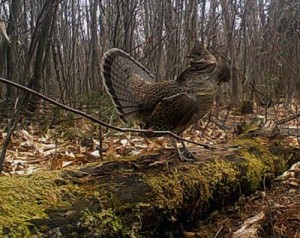
http://www.ruffedgrousemaine.org/sites/default/files/styles/large/public/homepagepatty.jpg?itok=ZsXYJA6f
Citation:
http://www.forestguild.org/publications/forest_wisdom/Wisdom14.pdf

